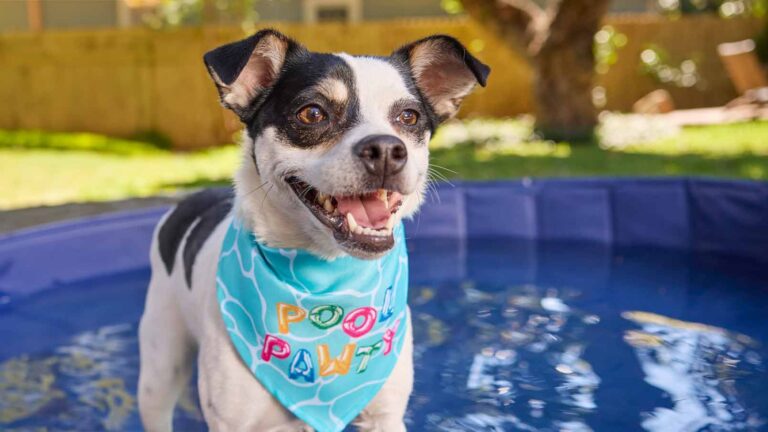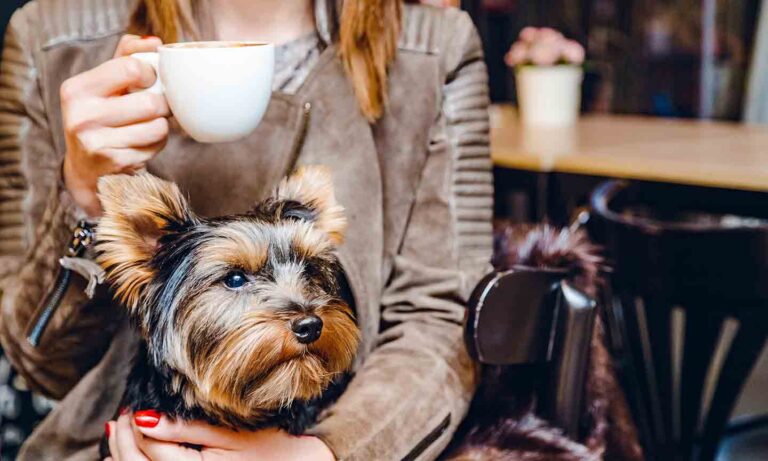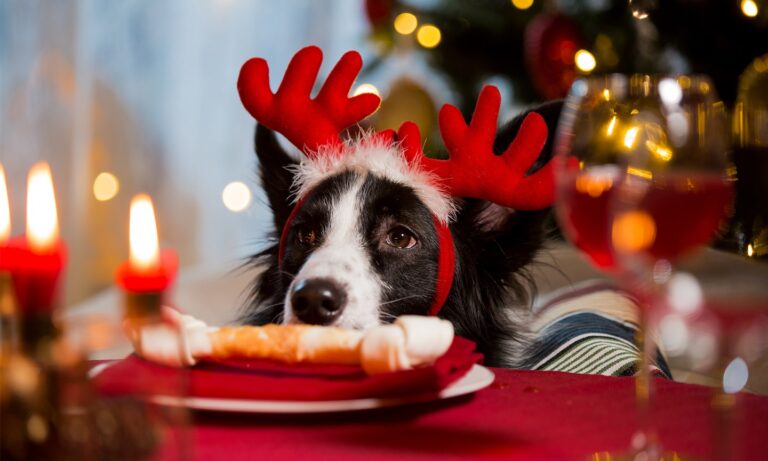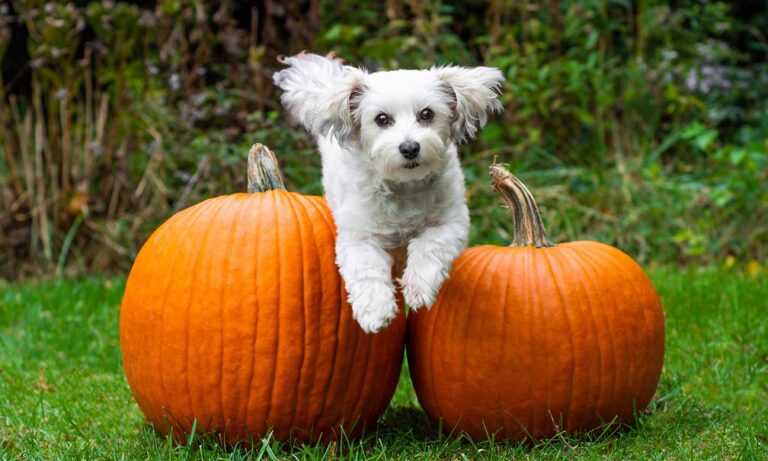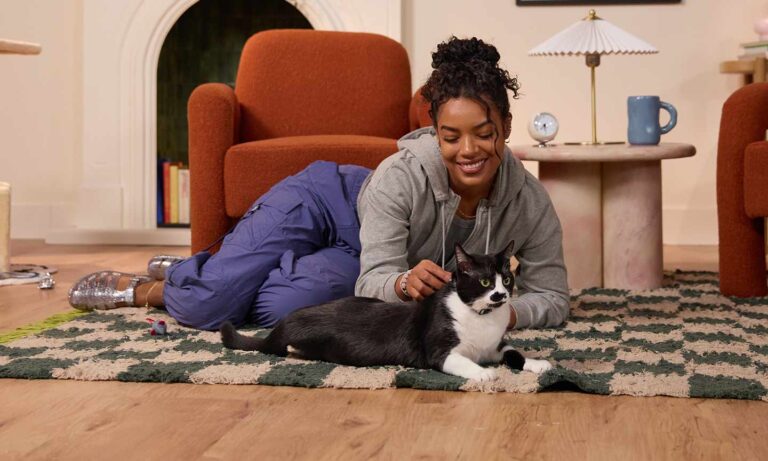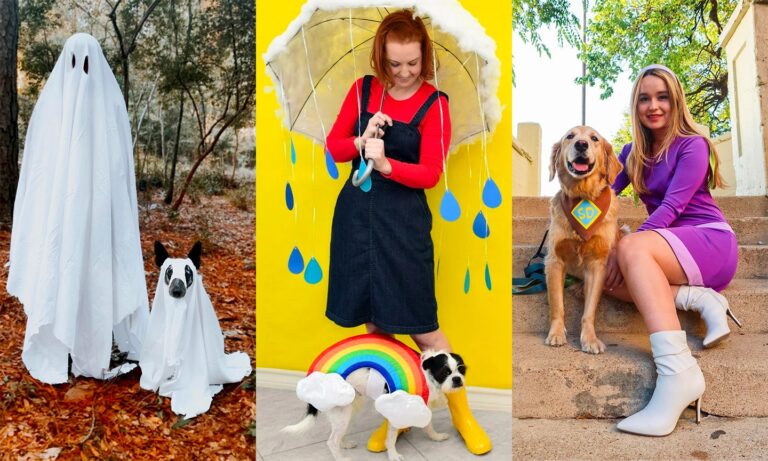So It’s Your First Halloween with Your New Pet? Keep These Safety Tips in Mind
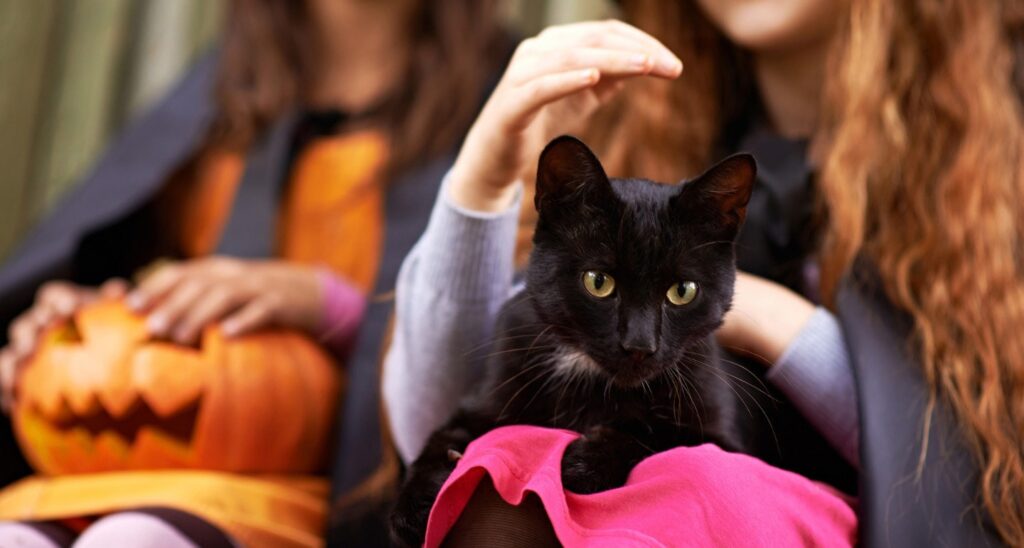
Photo by iStock.com/mediaphoto
Silly costumes, trick-or-treating, special treats and more? No wonder Halloween is a favorite among many pet parents and their furry friends. If you’re spending your first All Hallows’ Eve with your pet this year, you’re probably extra excited to celebrate together—but you may not be aware of some common hazards you may encounter along the way. Don’t get spooked! Follow these Halloween safety tips for pets to ensure October 31 is full of fun frights (without any serious scares).
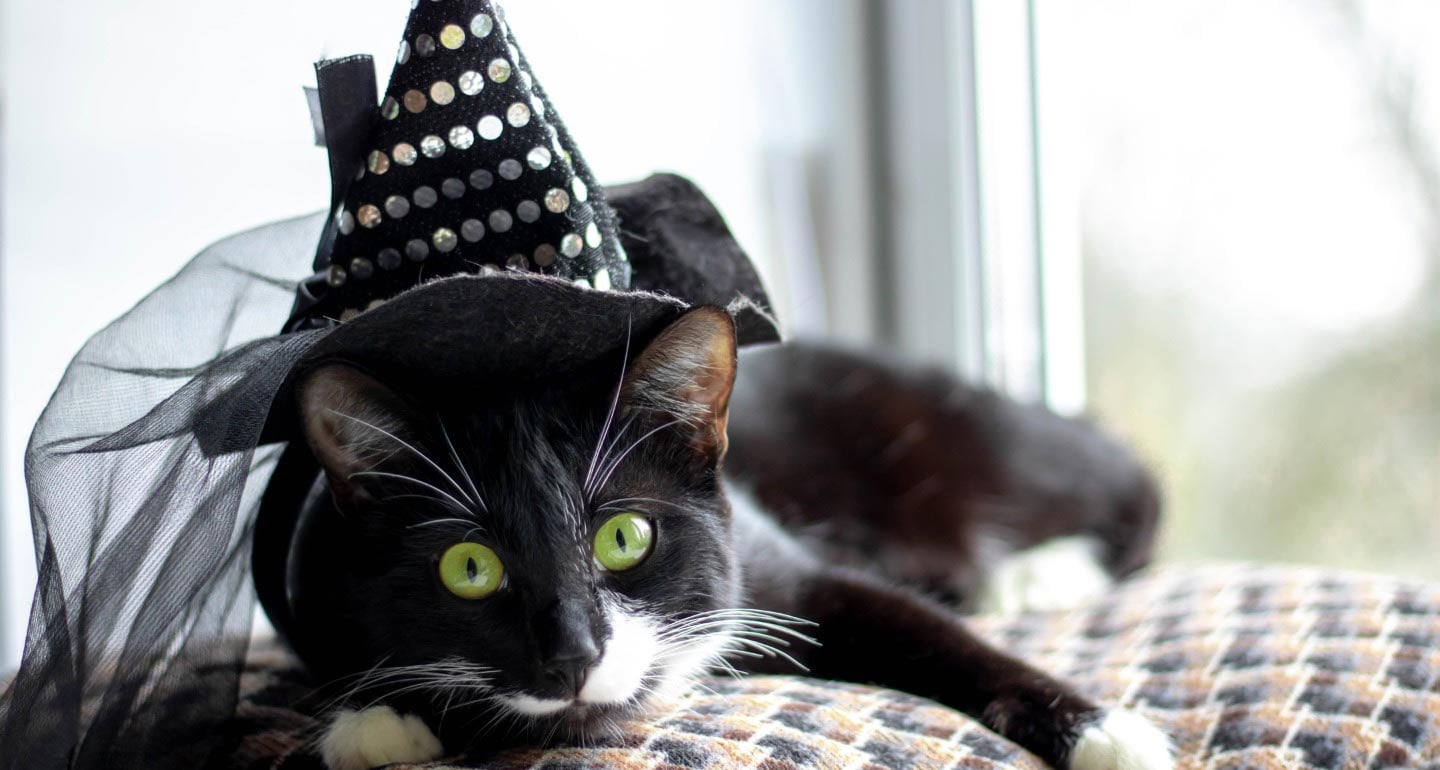
iStock.com/Lubov
Dress for Success
The number one thing you need for Halloween? Costumes, of course! There are so many different costumes for dogs and for cats—and yes, even other pets too. (This magical getup for a rabbit or chinchilla who’s a unicorn at heart is the perfect example.)
It’s natural to feel giddy at the prospect of pairing your adorable pet with an equally cute costume. But don’t let that excitement distract you from your pet’s wants and needs. Though dogs, cats and even guinea pigs look super cute in costumes, not all pets enjoy wearing them. Your best bet, if your pet has never worn any sort of clothing before, is to start small to see how they react.
“A bow tie, bandana or even a themed collar can be great, low-stress, festive attire,” says Rebecca Lohnes, MS, CDBC, ACCBC, training and behavior manager at Lollypop Farm, the Humane Society of Greater Rochester in Fairport, New York.
If you go for an all-out costume, buy it early enough to try a few dress rehearsals to help get your pet used to the costume in the days or weeks leading up to Halloween, Lohnes suggests. “Try to place the costume on them in a less restricting way and pair it with treats. Place more elements of the costume on them over the course of a few sessions,” she says.

iStock.com/FatCamera
Trick-or-Treat With Caution
Trick-or-treating can present hazards for pets, so keep these Halloween safety tips for pets in mind for all your Halloweens to come.
Mary Molloy, CPDT-KA, owner and head trainer at Nirvana Tails LLC in Queens County, New York, suggests only taking your pet out on trick-or-treat night if you’re confident they can remain calm around strangers and will have good manners. It’s a busy night, after all, so all the people, pets, sniffs and sounds could make them nervous.
Again, pet parents may find a dress rehearsal to be helpful in preparing their pet for the big moment. “Gradual exposure is key,” Molloy says. “Make sure you do a few test runs first, going out at the same time you’ll be trick-or-treating and seeing how they react near a group of strangers.”
Lohnes also advises pet parents to watch for signs of fear or anxiety throughout Halloween night. Humans in costumes can be scary, after all—for people and pets alike. Never force your pet to interact with someone in costume.
“Too often I see folks try to force the animal to interact with a person who they’re scared of, which can result in aggression or increased fear,” Lohnes says.
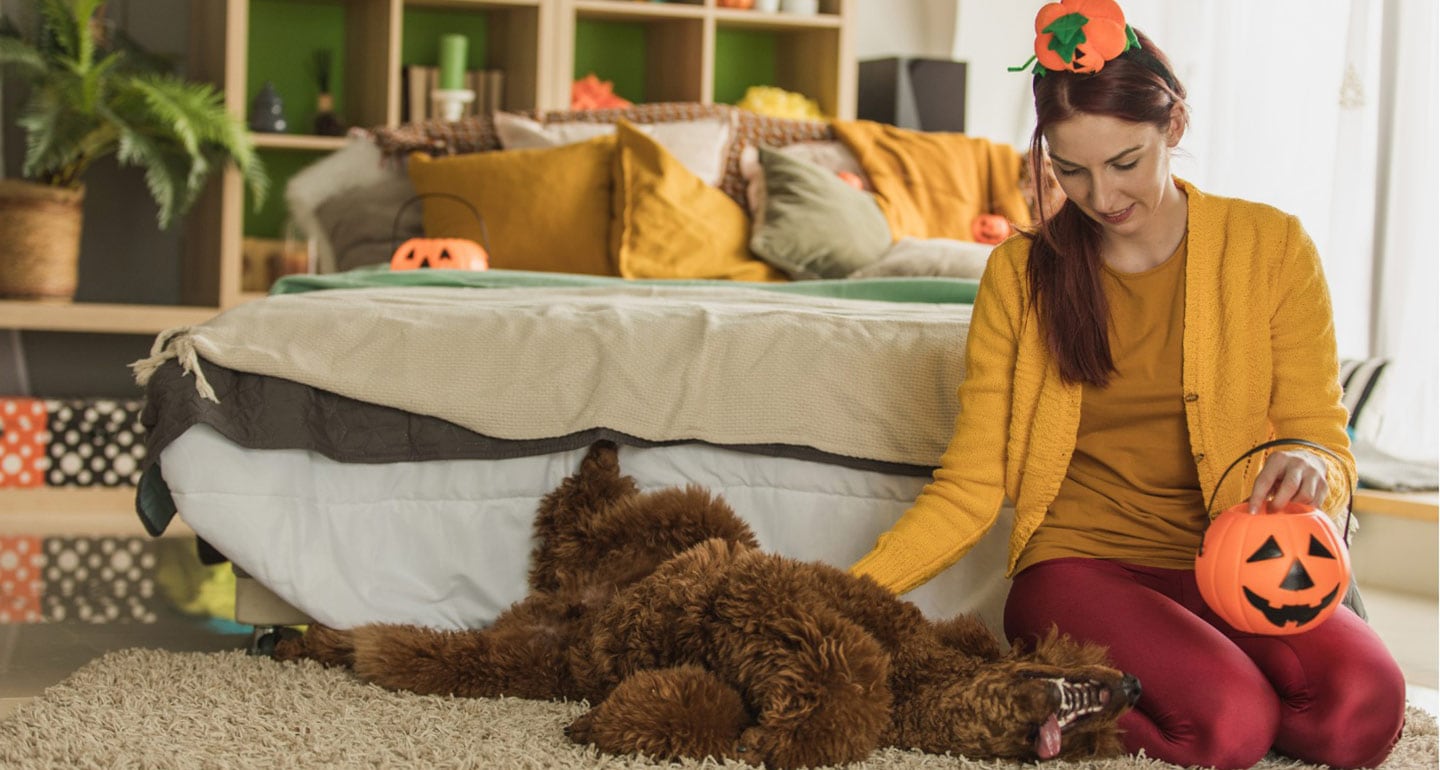
iStock.com/fotostorm
Guard the Candy
While some candy is more harmful to animals than others, virtually none of it is healthy for pets. That means it’s best to keep all candy safely tucked away for human consumption only. Still, it’s helpful to know which common Halloween candy is toxic to pets. The biggest offenders include:
- Chocolate
- Caramel apples
- Candy corn
- Sugar-free candy
- Chocolate-covered raisins
- Macadamia nuts
Candy wrappers can also cause problems, so be sure to throw them away immediately. If your dog is a trash can explorer, toss them in your outside dumpster or waste receptacle. Here’s what to do if your pet eats a candy wrapper.
If you still want your pet to join in on the fun of having Halloween goodies, why not bake them a special treat? It’s a festive activity you can do together (or at least an activity you can do while your dog or cat sniffs around all the tasty ingredients), and serving up a gourmet pet delicacy like strawberry ghosts or DIY frozen candy corn bones will make you feel like the greatest pet parent on the planet. Hey, you only get one first Halloween with your pet, so make the most of it.
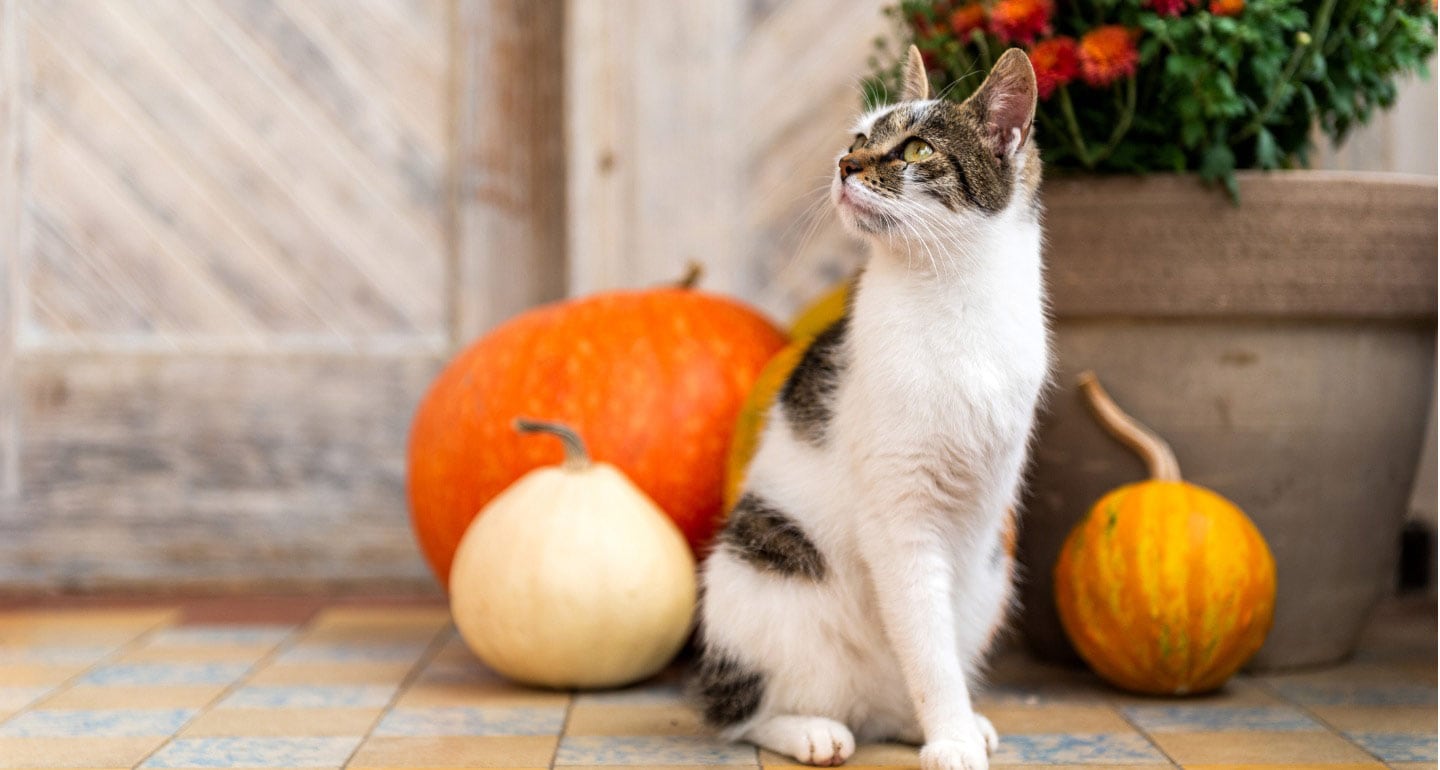
iStock.com/Andrea Obzerova
Beware of Noisy Knocks and Strangers
If you decide to stay home on trick-or-treat night to hand out goodies to the neighborhood, keep in mind that some pets will react loudly and even aggressively to people knocking on the door, ringing the doorbell or walking by your house.
As Halloween approaches, pay attention to how your pet responds to these events. If your pet freaks out every time someone comes to the door, there are a few things Molloy and Lohnes suggest to make Halloween a little easier:
- Work with a pet trainer to desensitize your fur baby to the sound of knocking or a doorbell. This kind of training takes time, Molloy says, so it’s best to start a few weeks before Halloween.
- Give pets a toy to keep them distracted — like this Halloween-themed spider teaser cat toy or pumpkin dog treat dispenser.
- Keep your pet in a different room during the peak hours of trick-or-treating.
Of course, if you suspect your pet will be really stressed out by the trick-or-treaters—or if you share a wall with neighbors who might be bothered by their constant barking—you can always opt out of handing out candy. Simply turn off the lights and hang a sign on your door that says, “Sorry, no trick-or-treaters.” There’s always next year!

iStock.com/Inna Skaldutska
Stay In and Chill Out
If more active Halloween activities are simply too stressful for your new pet, there’s no shame in opting for a relaxing night in. We are 100 percent here for spending the night snugging on the couch. And Molloy says keeping Halloween low-key can be an especially great life choice if your new pet hasn’t been with you for long.
“They’re still adjusting to their new lives, so you don’t want to pile on a whole bunch of new and potentially scary things all at once,” she says. “Cats, in particular, can take months getting used to their new territories.”
Staying home doesn’t mean guaranteed FOMO. There are plenty of ways to celebrate Halloween from the comfort of your sofa! Why not host a virtual Halloween party with your pet, or turn out the lights and watch one of your favorite Halloween movies with pets? For more inspo, check out these other of ways to celebrate a socially distanced Halloween.
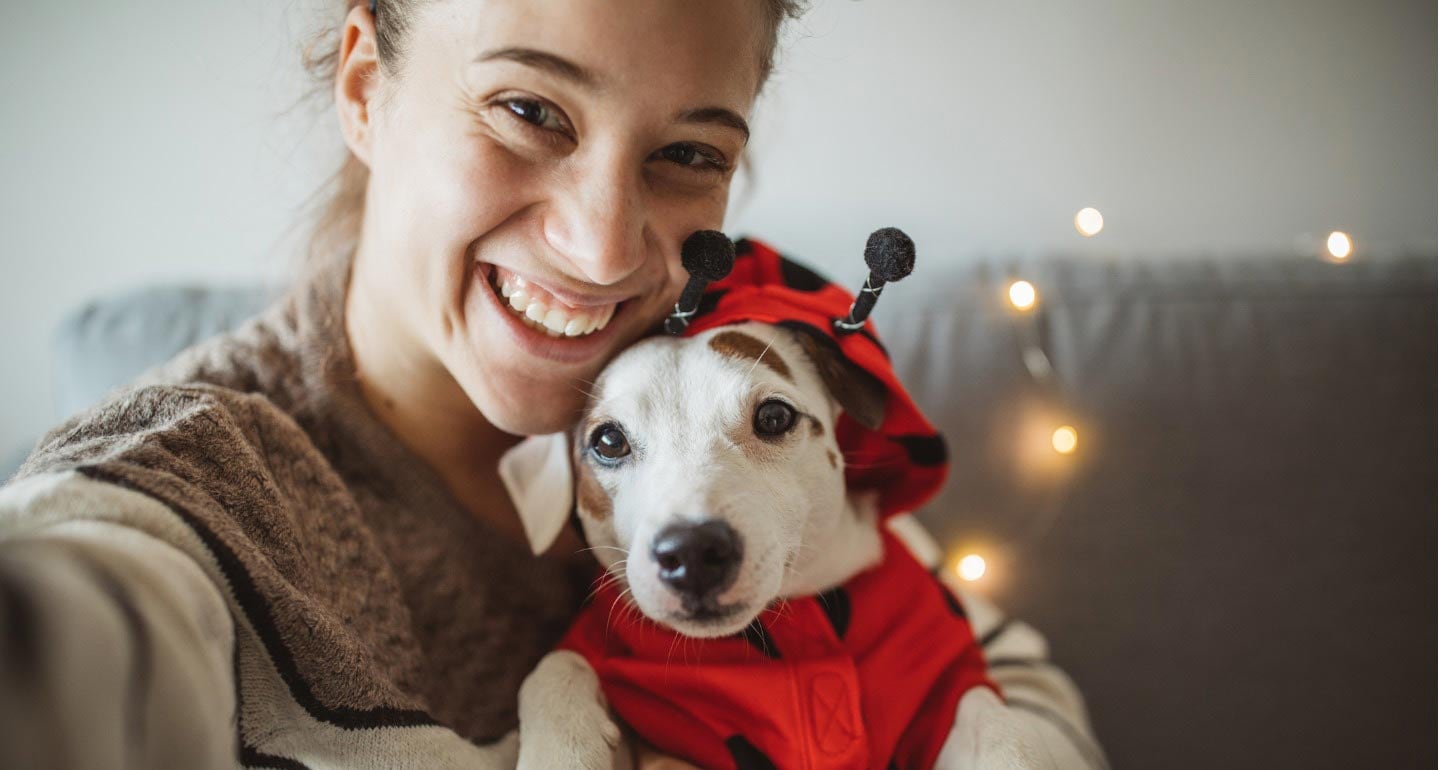
iStock.com/svetkid
Bonus Tip: Don't Forget to Take Lots of Photos
OK, this isn’t exactly safety advice—but that doesn’t mean it’s not important. However you decide to spend your first Halloween together, remember to snap some shots of your special celebration. You’re going to want to look back on your first Halloween with your new pet—and besides, you know you want to bless your friends’ timelines with pics of your precious pup or kitty.
Rachel Hegarty, an Arlington, Virginia-based photographer and pup mom to Milli the Yorkipoo, says a little planning can go a long way when it comes to pet photos. If it won’t add to your pet’s stress, give them a bath and/or brush their hair to make sure they’re looking their best. Choose a background that will contrast with your pet’s fur, she adds, and for nighttime pics, put a lamp or other source of light behind your pet, in addition to using the flash.
It’s also important to take lots—and when we say lots, we mean LOTS—of photos, rapid fire-style, especially if your pet has trouble sitting still, Hegarty adds. Use treats to keep your pet focused, and remember: Patience is the key to a perfect Halloween-themed photoshoot.
You can also follow these tips to capture the perfect selfie with your pet.
Whether you’re out mingling with trick-or-treaters or cozied up with a scary movie at home, this Halloween is one of many firsts new pet parents will remember for years to come. Follow these Halloween safety tips for pets and you’ll not only create some great memories—you’ll build an even stronger bond with your pet that’ll last you long after October 31.
Read more:
5 DIY Halloween Couples Costumes for You and Your Pet (Because You’re #RealtionshipGoals)
Cute Alert: 10 Cat Halloween Costumes for Your Favorite Feline




